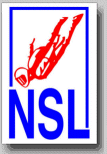
National
Skydiving
League
226 Pecan Street
Deland FL 32724
tel: (386) 801-0804
© 2003 - 2025
All Rights Reserved


226 Pecan Street
Deland FL 32724
tel: (386) 801-0804
© 2003 - 2025
All Rights Reserved

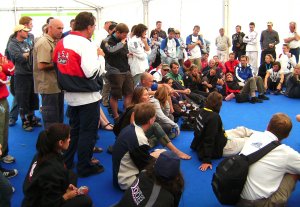
Two other main topics were on the agenda: the introduction of "half speed judging" and the event duration.
"Half speed judging" has already been discussed for quite a while. In fact, the topic was already officially on the agenda for the IPC Meeting in January 2008. Gillian Winter, IPC Delegate for France, had provided a proposal how to improve the accuracy of the judging results. The complete proposal was posted with the NSL News story on 20 December 2007 (Archives > 2007 > News > Search for: "half speed").
There was a strong division for a long time period between supporters of a new and different judging procedure, represented by the French proposal, and defenders of the current rules, mainly represented by the majority of the judges.
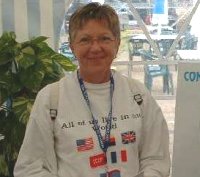
"The closer the teams are, the more accurate the judging tool must be if we want to avoid situations where judging can interfere in the final ranking. Inevitably any process will generate 'judgement call' situations but we need to work at a process that will reduce them as much as possible. Considered as a potential and efficient new tool for viewing jumps, 'half speed' viewing has, for a long time and by many first class competitors, been promoted as a solution. This was the case during the competitors meeting in Croatia in 2004 and again more recently after the last Malevsky International Cup in July 2007 where some very high scores were posted."
The resistance on the side of the judges was mostly caused by the fear that the judging procedure would take much more time compared to the "full speed judging" and the current set of rules for judging. The "slow motion judging" of the years before the change to "full speed judging" took in fact much longer and caused serious delays between dubbing and scores on the board, while the judges also spent significantly more time in the judging room.

Teams, competitors and judges are actually dealing with a self-inflicted problem. The performance and scoring level of the best 4-way teams in the world has come to a point where it is very challenging to follow the fine details, even for well trained eyes. In addition to the still increasing speed, the IPC also decided to discontinue the former 2-point penalty a few years ago. Each infringement now causes only a 1-point deduction.
This situation has doubled the trouble ever since. In the old days with 2-point busts, teams used to stop and go back to fix flaws and potential penalty situations to avoid the painful point deductions. The new 1-point deduction was a nice change for the teams and encouraged them to always move forward and ignore any critical situations. This understandable tactic increased the speed even more and helped lifting the scoring level.

It is not too far fetched when supporters of an updated judging procedure say that the change of the penalty rule from 2-point to 1-point deductions encouraged the teams to go even faster and accept or ignore mistakes. This problem would not exist had the IPC re-introduced a slower speed option for the judging procedure when the penalty situation was changed.
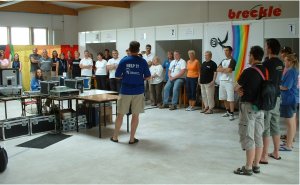
Supporters of an updated judging procedure are not asking to bring back additional point deductions, even though this could make sense as an option, as well. Teams might re-consider the tactic of trying to "sell points to the judges" if each infringement would bring a 2-point or even 3-point deduction.
Harder punishment is not a popular solution in the pursuit of the goal to get as close as possible to the true score for a competition jump. The better way to find the potentially undetected infringements and spots where teams tried to "sell a point to the judges" seems to be the technical solution. It is logically easier for the judge's eyes to follow the details of a jump when it is shown in a slower speed.
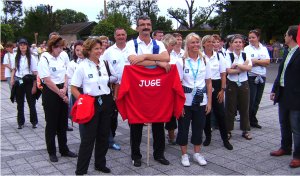
Supporters of Gillian Winter's "half speed judging" proposal do not see unlimited slow motion sessions as an option. They claim that one full speed viewing plus one half speed viewing add up to exactly the same total time of 105 seconds, compared to three viewings in full speed only. Thus, judging any competition jump would not slow down the whole procedure at all.
It does not even have to be half speed, as participants in the open IPC meeting in Maubeuge suggested. The slower viewing could also be shown with 60%, 70% or 80% of the full speed. The main request is to give judges, audience and competitors a better opportunity to find infringements that currently remain undetected, partially due to the smart team tactics. It seems to be time for the judging rules to catch up with the significantly increased performance level and faster pace.
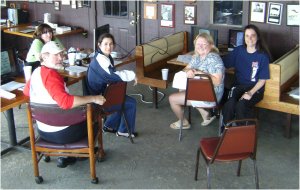
The most recent and probably most promising idea simply suggests a set time period of 90 seconds per jump until the final score has to be posted by each individual judge in the panel. Each judge can use any tool that is technically available to get to the final score in these 90 seconds. It could be one viewing in full speed only, and it could be five viewings of the same specific maneuver in slow motion. Each judge would have the freedom to choose the way to get as close as possible to the true score. There would be only one basic rule for every judge: the final score has to be posted after 90 seconds maximum.
Fiona McEachern, Chair of IPC's Subcommittee Formation Skydiving, knows that something needs to be done. She will weigh all the options, together with the other members of her committee. The teams may have to abandon the tactic of trying to sell points to the judges soon. Well, that has actually been a crucial part of the sport ever since it was invented. It may just soon become easier for the judges and the audience to detect the selling points...